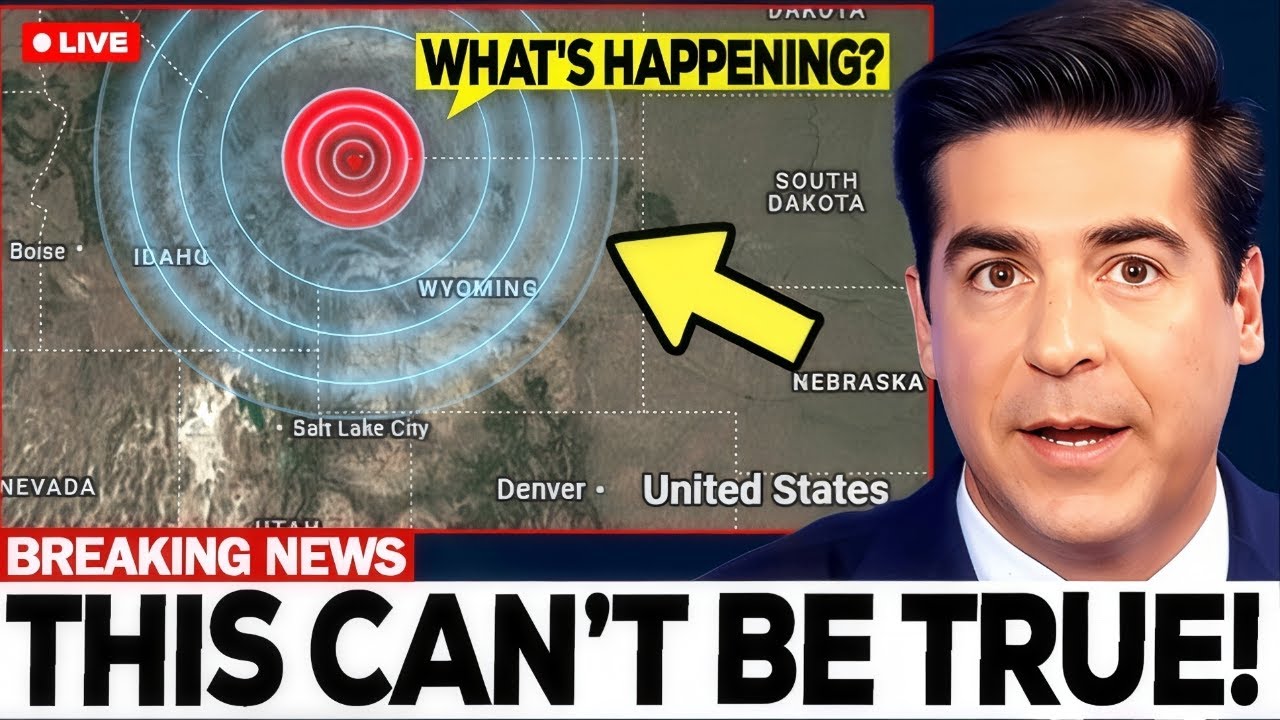What Scientists JUST Revealed About Yellowstone’s Magma System Is TERRIFYING

**What Scientists Just Revealed About Yellowstone’s Magma System Is Really Worrying**
In Yellowstone National Park, a sudden geyser eruption sent visitors into a panic as rocks and debris rained down. Although there was no warning, the event showed that Yellowstone is not as quiet as it seems.
Underneath its natural beauty lies a supervolcano system – one of North America’s biggest geological threats, which could impact the global climate if it were to awaken.
While Yellowstone isn’t screaming, it is whispering – and that whisper is growing. In March 2025, more than 70 small earthquakes occurred, mostly concentrated on the northern rim of the caldera. These “seismic waves,” though small, indicate movement of underground fluids or magma – important signs of geological change below.
Advanced seismic networks, combined with artificial intelligence, are analyzing the smallest seismic signals. Some earthquakes are more than 10 km deep, especially near the Hebgen Lake fault – the site of a major earthquake in 1959.
**Ground deformation: Yellowstone’s “breathing”**
Satellite data shows that the caldera has been sinking slightly since late 2024. However, the subsidence is not uniform – the Norris area is sinking faster, possibly due to local pressure or temperature changes.
In addition to vertical movement, Yellowstone is also recording horizontal displacements – indicating fault slippage and crustal stretching. On-site tilt sensors also record small tilt movements, reflecting pressure changes in the magma lake or hydrothermal system above.
**Thermal System: Silent Warning Signs**
Steamboat Geyser – Yellowstone’s most powerful geyser – stopped erupting in March 2025, but underground, activity continues. In particular, a new vent near Norris has appeared, spewing steam at 77°C – a worrying sign. Vents are the “pressure valves” of the thermal system. When they change, it may be because larger changes are occurring deeper below.
**New Magma Map: More Complex Than We Thought**
A new 3D model from 2025 shows that the Yellowstone magma system is not a single chamber, but rather at least seven magma pockets that range from 4km to more than 45km deep. Some pockets are cooling, while others still contain semi-fluid magma – which has the potential to move and erupt.
The system functions as a network of interconnected fissures. A small change in one area can have a ripple effect in others. This makes predicting an eruption like playing dominoes with hundreds of pieces waiting to fall.
**Gas and temperature changes: Signs of increased pressure**
Modern gas sensors have recorded small but significant increases in CO₂ and radon in areas like Norris and Mammoth. CO₂ can indicate magma is rising near the surface. Radon reveals cracks in rocks that are getting deeper.
Modern technology, such as drone gas scanning and soil sensors, shows the diffusion of gases from deep layers – even the presence of helium-3, an isotope that originates in the Earth’s mantle.
**The consequences of a Yellowstone eruption**
Even a small eruption would be enough to cause major disruption: ash could blanket western cities, disrupt transportation, contaminate water, and knock out power grids. If a super-eruption were to occur, the consequences would be global: climate change, crop failures, global economic collapse.
Evacuation plans exist, but they don’t apply to the millions of people who live within 500 miles. Models show that volcanic gases could spread across the globe in just a few weeks, affecting Africa and Southeast Asia.
**Current Status: Is It Worrying?**
Yellowstone is currently at a “normal” green alert level—meaning there’s no clear evidence of an imminent eruption. The chance of a super-eruption is estimated at about 1 in 730,000 per year. But small changes—like geological fracturing, rising temperatures, and shifting ground—are signs that Yellowstone is in motion.
While it’s uncertain when a major event will occur, Yellowstone is a living machine—and we’re just visitors learning to listen to the Earth’s pulse.









